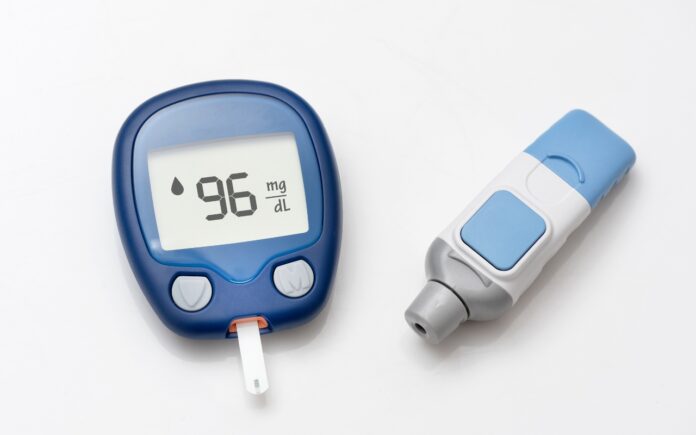Blood sugar levels, or blood glucose levels, play a crucial role in maintaining overall health. These levels fluctuate throughout the day, influenced by various factors such as diet, exercise, and hormonal changes. One common phenomenon many people experience is a spike in blood sugar levels in the early morning, often referred to as the “dawn phenomenon.” Understanding the causes, effects, and management strategies for these morning spikes can help individuals maintain better glucose control and improve their overall health and well-being.
The dawn phenomenon is characterized by an early-morning rise in blood sugar levels, typically occurring between 4 a.m. and 8 a.m. This spike is particularly common in individuals with diabetes, but it can also affect those without the condition. The exact cause of the dawn phenomenon is not entirely understood, but several theories have been proposed. One widely accepted explanation is the overnight release of certain hormones, including growth hormone, cortisol, glucagon, and epinephrine, which increase insulin resistance and consequently raise blood sugar levels. These hormones are known as counter-regulatory hormones because they counteract the effects of insulin.
The body's circadian rhythm, or internal body clock, also plays a significant role in regulating blood sugar levels. During the night, when the body is at rest, it relies less on glucose for energy and more on fat. However, as morning approaches, the body prepares for the upcoming day by increasing glucose production. This shift is crucial for maintaining the constant supply of glucose that the brain and other vital organs require, even during sleep.
The connection between the body's internal rhythms and blood sugar levels is complex and involves various biological feedback loops. Throughout the day, the body strives to keep blood sugar levels within a narrow range to provide energy to cells while avoiding the harmful effects of prolonged high blood sugar levels. Insulin and glucagon are key hormones in this regulatory process. Insulin promotes the uptake of glucose by cells after eating, while glucagon signals the liver to produce more glucose when blood sugar levels are low. This delicate balance ensures that the body has a steady supply of glucose at all times.
For individuals with diabetes, managing blood sugar levels can be particularly challenging due to the dawn phenomenon. High morning blood sugar levels can lead to a range of complications, including increased risk of cardiovascular disease, nerve damage, vision problems, and kidney disease. Therefore, understanding and addressing the factors contributing to these early-morning spikes is essential for maintaining good health.
Several strategies can help manage the dawn phenomenon and keep morning blood sugar levels in check. One effective approach is adjusting the timing and composition of meals. A balanced diet with a focus on low-glycemic index foods can help stabilize blood sugar levels throughout the night. Additionally, eating a smaller, protein-rich snack before bed can prevent the liver from producing excessive glucose during the night.
Regular physical activity is another important factor in managing blood sugar levels. Exercise helps improve insulin sensitivity and can reduce the impact of the dawn phenomenon. Incorporating a mix of aerobic exercises, such as walking or swimming, and resistance training, such as weightlifting, can be particularly beneficial.
Monitoring blood sugar levels closely is also crucial for individuals experiencing the dawn phenomenon. Using a continuous glucose monitor (CGM) can provide valuable insights into how blood sugar levels fluctuate throughout the night and early morning. This information can help tailor lifestyle and medication adjustments to better manage blood sugar levels.
Medications may also be necessary for some individuals to manage the dawn phenomenon effectively. For people with diabetes, adjusting the timing or dosage of insulin or other glucose-lowering medications can help mitigate early-morning blood sugar spikes. Consulting with a healthcare provider is essential to determine the most appropriate medication regimen.
In addition to these strategies, maintaining a consistent sleep schedule can also play a role in managing blood sugar levels. Going to bed and waking up at the same time each day helps regulate the body's circadian rhythm, which in turn can stabilize blood sugar levels. Ensuring adequate sleep is also important, as sleep deprivation can negatively impact glucose metabolism and increase insulin resistance.
Stress management is another crucial aspect of maintaining stable blood sugar levels. Chronic stress can trigger the release of stress hormones, such as cortisol, which can increase blood sugar levels. Incorporating stress-reducing activities, such as meditation, yoga, or deep breathing exercises, into daily routines can help mitigate the impact of stress on blood sugar levels.
For individuals who continue to experience difficulty managing the dawn phenomenon despite lifestyle and medication adjustments, consulting with a diabetes educator or endocrinologist can provide additional support and guidance. These healthcare professionals can offer personalized recommendations and help develop a comprehensive diabetes management plan.
Emerging research also suggests that technological advancements, such as artificial pancreas systems, may offer new solutions for managing the dawn phenomenon. These systems use a combination of continuous glucose monitors and insulin pumps to automatically adjust insulin delivery based on real-time blood sugar readings. While still in development, these technologies hold promise for improving blood sugar control and reducing the burden of managing diabetes.
Understanding the dawn phenomenon and its impact on blood sugar levels is crucial for individuals with diabetes and those at risk of developing the condition. By implementing lifestyle changes, monitoring blood sugar levels, and working closely with healthcare providers, individuals can effectively manage morning blood sugar spikes and reduce the risk of complications.
In summary, the dawn phenomenon is a common occurrence that can significantly impact blood sugar levels in the early morning. The combination of hormonal changes, circadian rhythms, and individual lifestyle factors all contribute to these fluctuations. By understanding the underlying causes and implementing effective management strategies, individuals can achieve better blood sugar control and improve their overall health.
For further information on managing blood sugar levels and the dawn phenomenon, you can visit resources such as Mayo Clinic and ZOE. These websites provide valuable insights and expert guidance on maintaining healthy blood sugar levels and managing diabetes effectively.
In conclusion, managing blood sugar levels, particularly in the early morning, requires a multifaceted approach that includes lifestyle modifications, close monitoring, and appropriate medical interventions. By taking proactive steps to understand and address the dawn phenomenon, individuals can achieve better glucose control, reduce the risk of complications, and enhance their overall quality of life.













![Bowflex Max Total: 2024 Fitness Workout Exercise Machine [Review] Bowflex Max Total: 2020 Equipment Review For Complete Upper and Lower Body Workout](https://www.advancedliving.com/wp-content/uploads/2019/12/Bowflex-Max-Total-218x150.jpg)


